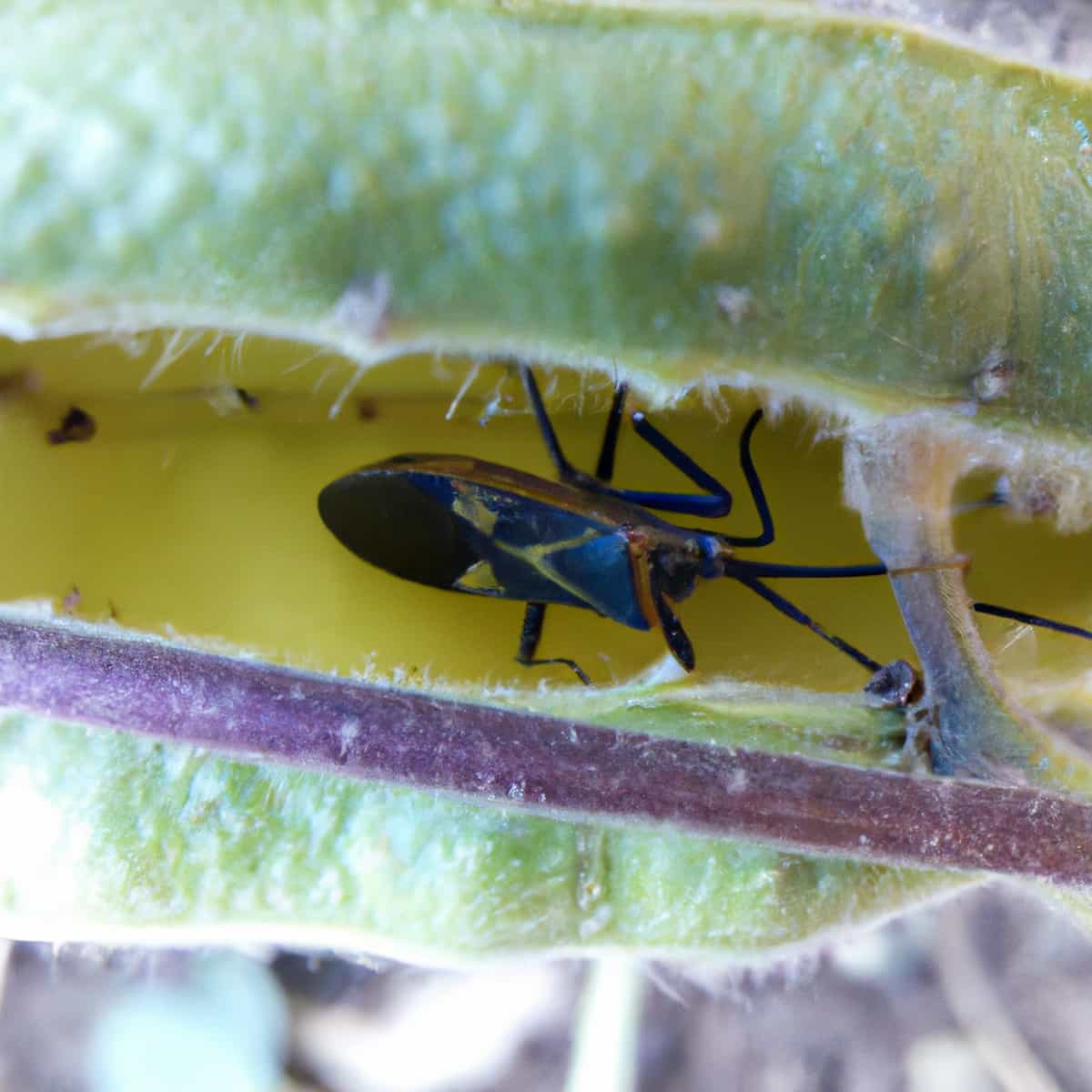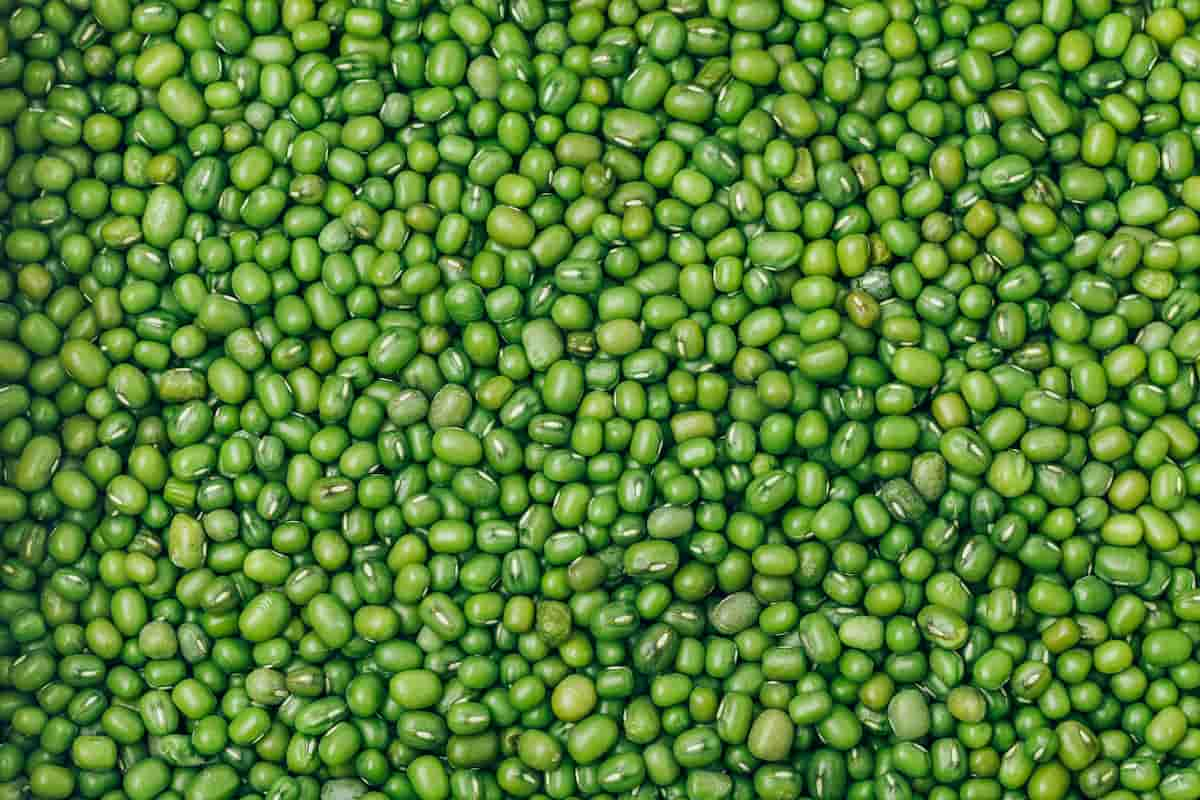Pod bugs are a group of insects belonging to the family Coreidae, which is part of the order Hemiptera. These bugs are known to cause significant damage to various crops, including green gram. The four most common species of pod bugs found in green gram crops are Riptortus pedestris, Clavigralla gibbosa, Clavigralla horrens, and Anoplocnemis phasiana. Pod bugs are sap-sucking pests attacking mostly on leguminous crops like green gram. The adult bugs are green in color, with a triangular shape, and are about 1 cm long.

They have a distinct odor, which can be offensive if disturbed or crushed. Pod bugs cause damage to the green gram, Red gram, and other pulses by feeding on the pods, causing them to become shriveled, discolored, and deformed. Infected pods often fail to develop seeds, leading to significant yield losses. Moreover, pod bugs can transmit plant viruses, further damaging the crop. Managing pod bugs in green gram requires a combination of cultural, biological, and chemical techniques. It is important to identify pod bug infestations early to minimize damage.
Pod Bug Management in Green Gram
Identification of Pod Bug
Pod bugs, including Riptortus pedestris, are sap-sucking pests that primarily attack leguminous crops such as green gram. The adult bugs are green in color, with a triangular shape, and are about 1 cm in length. The nymphs of R. pedestris are brownish-black and hemispherical, resembling dark brown ants. These bugs are considered the most important pests of a green gram at the podding stage, as they can cause significant damage to the pods and reduce the overall yield of the crop.
The Life Cycle of Pod Bug
Pod bugs, including Riptortus pedestris, Clavigralla gibbosa, and C. horrens, are green gram crop pests with distinct life cycles. The female pod bug lays eggs on pods or leaves, averaging 115 eggs for R. pedestris and 60-400 eggs for C. gibbosa. The egg period lasts 3-4 days for R. pedestris and four days for C. gibbosa. Nymphs undergo five instars, with a duration of 16 days for R. pedestris and 7-31 days for C. gibbosa. Adult pod bugs live up to 150 days and can cause significant damage to green gram crops if not managed effectively.
Causes/Conditions Favorable for Pod Bug Spread in the Field
In green gram fields, Pod bugs like Riptortus pedestris and Clavigralla spp. can increase quickly in favorable conditions like high temperatures and low humidity. The bugs thrive in weeds and crop residues, and delayed planting can also increase the population. The spread of pod bugs in the field can be limited with effective crop management techniques.
Damage Symptoms of Pod Bug
- Nymphs and adults sucking the sap from unripe seeds in green pods
- Shriveling and drying of tender parts, especially under severe infestation
- Clustering of bugs on the pods
- Black spots on the pods
- Shedding of green pods
- Poorly filled pods with shriveled grains inside
Yield Loss Due to Pod Bug on Green Gram
Riptortus pedestris and Clavigralla spp. are two pod bugs that can reduce the production of green gram crops. Studies show that these pests can reduce grain production in green gram grain by 10 to 85 percent. Green gram crops have also been claimed to have suffered economic losses of 25–55%. Effective pest control techniques are essential for crop security and sustainable farming methods because these losses can significantly affect farmers’ livelihoods.
In case you missed it: Spotted Pod Borer Management in Green Gram: Symptoms, Identification, Treatment, Chemical, Biological, Natural, and Organic Control

Pod Bug Management in Green Gram by Cultural Method
- Timely planting: Early planting of crops can help avoid the peak period of pod bug infestations.
- Crop rotation: Crop rotation can reduce the build-up of pod bugs in the field by disrupting their life cycle and reducing their food source.
- Weed management: Regular weeding can reduce the habitat for pod bugs in the field, as weeds can provide an ideal environment for their growth and reproduction.
- Residue management: Proper disposal of crop residues can help minimize the population of pod bugs in the field.
- Trapping: Yellow sticky traps can be used to attract and trap adult pod bugs
Pod Bug Management in Green Gram by Biological Method
Biological methods of pod bug management in green gram crops include using natural enemies such as parasitoids and predators to control the pest population. These methods can be effective in reducing the pest population and minimizing the use of synthetic pesticides.
Pod Bug Management in Green Gram by Chemical Method
Chemical methods of pod bug management in green gram crops involve using insecticides. Common insecticides include Dimethoate, Methyl demeton, Imidacloprid, Thiamethoxam, and endosulfan. These insecticides are sprayed on the infested crops in recommended doses
Pod Bug Management in Green Gram by Organic/Natural Method
Neem oil, garlic extract, and spicy pepper spray are frequently used techniques. These organic treatments have insecticidal qualities and can aid in reducing the number of pests. Additionally, intercropping with plants that repel pests and keeping a clean field can help to avoid pod bug infestations. These techniques can also support preserving soil health and biodiversity while being safer for the ecosystem and human health.
Preventive Measures for Control of Pod Bug
The use of resistant varieties, early planting and harvesting, routine field checks, and good hygiene are examples of preventive measures. The residues from the plant can also be removed and destroyed to help stop the bug from spreading. To further reduce the risk of pod bug attacks, keep ideal soil moisture, refrain from overusing nitrogen fertilizers, and use crop rotation.
In case you missed it: Bean Aphid Management in Green Gram: Symptoms, Identification, Treatment, Chemical, Biological, Natural, and Organic Control

Conclusion
Green gram pod bugs cause substantial yield losses and economic harm. Effective pest management requires proper identification and life cycle understanding. Preventing pod bug infestations requires crop rotation, timely sowing and harvesting, and field sanitation. Chemical insecticides should be used sparingly and as a last option to reduce environmental and health risks.
- Beneficial Insects in Pest Management
- Natural Solutions for Pest Control in Flower Gardens
- Types of Fungicides Used in Agriculture
- Common Issues in the Fruit Development Stage of Pomegranate Farming
- Fruit Development Issues in Papaya: Easy Solutions and Treatment
- Soil-Borne Diseases and How to Protect Your Plants
- Practices to Prevent Disease Spread in the Garden
- From Wilted to Thriving: How to Treat Root Rot Naturally in Houseplants
- Natural Remedies to Cure Brown Spots on Fig Tree Leaves